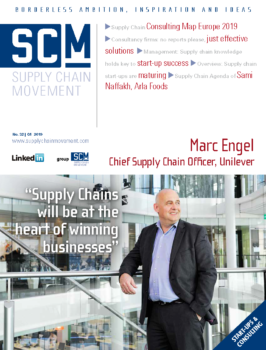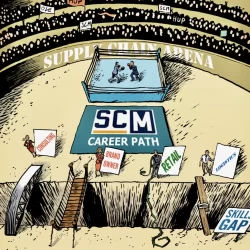Supply chain knowledge holds the key to start-up success

Start-ups are making waves in the supply chain management world with their innovative and sometimes astonishing ideas. The biggest challenge is to gain traction for their ideas and find their first customer, even if only for a pilot or proof of concept. How have successful start-ups tackled that challenge? To find out, we asked a number of start-ups and their first customers.
By Marcel te Lindert
In autumn 2017, there was an extreme shortage of transport capacity throughout Germany. One of the many companies affected was Rossmann, a chain of almost 4,000 drugstores in Germany and across Central Europe. For Hendrik van Duuren, who is in charge of logistics at Rossmann, it seems like just yesterday. “The Timocom transport platform has a transport barometer that shows the ratio of the number of available trucks to the number of transport orders. At one point, that ratio was one to ten; there was just one truck available for every ten orders. As a result, various suppliers failed to get their goods to us on time, which of course had consequences for our stores. We were forced to set some items to ‘zero’. By the end of 2017, the only party that had sufficient transport capacity available was Cargonexx, a start-up.”
Strong message
As a start-up, you sometimes need a little luck. Budding companies often have an innovative idea, but they struggle to find customers to try them out – even as a pilot project. Some founders lack the skills to ‘sell’ their ideas to the private sector, and others don’t have a watertight business model. On the other side of the fence, many companies are reluctant to spend time and money on a start-up whose solution still has to be fully proven.
Before approaching customers, start-ups should first have a strong message – one that demonstrates how their product solves a real problem, according to Guy Wollaert, chair of the advisory board of – and investor in – Pro Alliance. “That calls for in-depth knowledge of both the market and the problem. The problem must resound with customers, even if their operation isn’t directly affected by it. They need to understand that the solution serves a purpose. However, start-ups are at risk of getting caught up in their product. They should put themselves in the customer’s shoes rather than approaching things from their own perspective. ‘Don’t fall in love with your product, but with your customers,’ as the saying goes,” states Wollaert.
So how can start-ups with a strong message come into contact with potential customers? Should they tap into their own network, seek publicity or take a scattergun approach to calling prospects? “All three!” replies Wollaert. “Start-ups with a completely new idea for a whole new market – such as Uber or Airbnb – benefit from publicity. At Pro Alliance it was different. The co-founders have in-depth knowledge of their focus market and were able to directly approach high-potential customers. Besides that, they presented their message at industry events. Their first customer is based in the DIY sector, which is a small world where everyone knows everyone else. Word-of-mouth is still the best type of advertising.” … … …
 Want to read more?
Want to read more?
Subscribe to the digital subscription to read the full version >>
or
select one of our annual or digital subscriptions to receive the next issue >>
This article was first published in Supply Chain Movement 32 | Q1 – 2019










